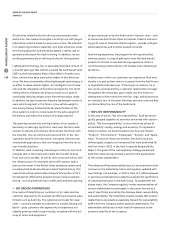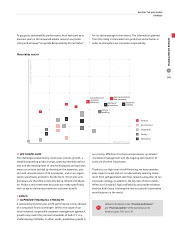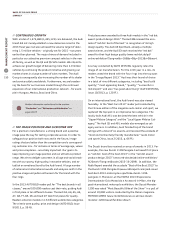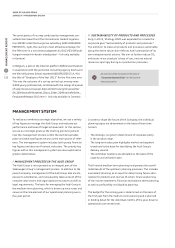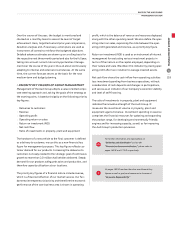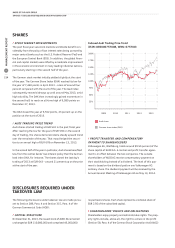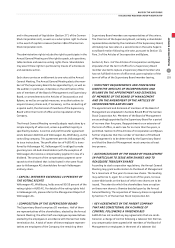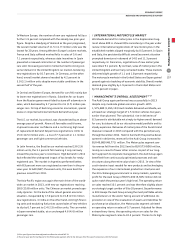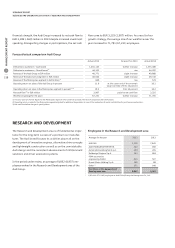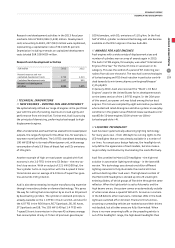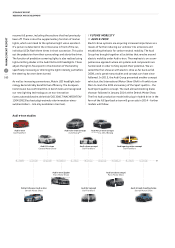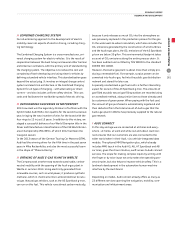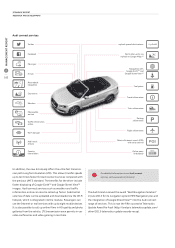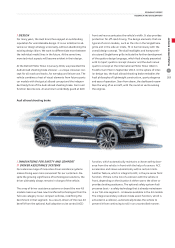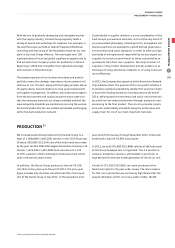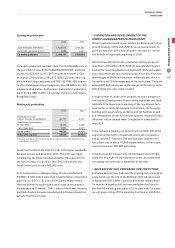Audi 2013 Annual Report Download - page 160
Download and view the complete annual report
Please find page 160 of the 2013 Audi annual report below. You can navigate through the pages in the report by either clicking on the pages listed below, or by using the keyword search tool below to find specific information within the annual report.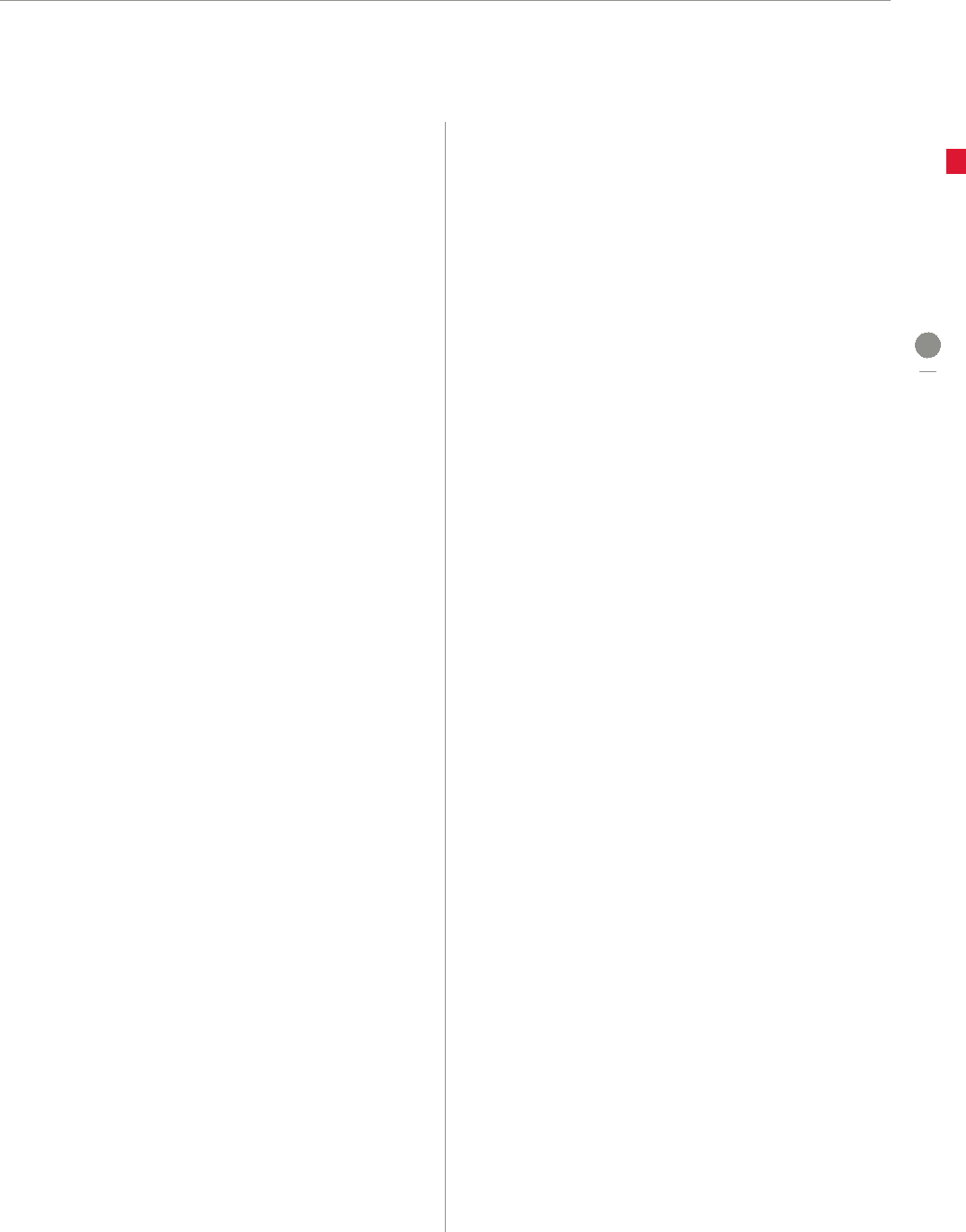
ECONOMIC REPORT
BUSINESS AND UNDERLYING SITUATION
MANAGEMENT REPORT
157
A
In Western Europe, the number of new cars registered fell by a
further 1.9 percent compared with the already low prior-year
figure. Despite a steadying of demand as the year progressed,
the overall market volume of 11.5 (11.7) million units was the
lowest for 20 years. Among Western Europe’s volume markets,
France and Italy suffered marked falls in sales of 5.6 and
7.1 percent respectively, whereas state incentives in Spain
prevented a renewed contraction in the number of passenger
cars sold. Increasing economic momentum led to strong con-
sumer demand in the United Kingdom car market, bolstering
new registrations by 10.7 percent. In Germany, on the other
hand, overall market demand receded by 4.2 percent to
3.0 (3.1) million units despite more stable conditions in the
second half of the year.
In Central and Eastern Europe, demand for cars fell mainly due
to lower new registrations in Russia. Subsidies for car buyers
from the Russian government failed to stave off a downturn in
sales, which decreased by 5.7 percent to 2.6 (2.7) million pas-
senger cars. On top of declining economic momentum, special
levies on imported vehicles held back demand last year.
The U.S. car market, by contrast, was characterized by an above-
average pace of growth. Above all favorable credit terms,
improved consumer confidence and a continuing high level
of replacement demand helped new registrations climb to
15.6 (14.5) million units – a rise of 7.7 percent or 1.1 million
passenger cars and light commercial vehicles.
In Latin America, the Brazilian car market reached 2.8 (2.9)
million units, the 3.1 percent fall meaning it only narrowly
missed the previous year’s record level. High demand in 2012
had reflected the widespread impact of tax breaks for newly
registered cars. The market in Argentina performed better,
with 8.9 percent more cars registered as new than in the pre-
vious year. At 640 (587) thousand units, this even beat the
previous record from 2011.
The Asia-Pacific region was again the main driver of the world-
wide car market in 2013, with new car registrations reaching
28.0 (25.8) million units. The Chinese car market proved espe-
cially dynamic. On the back of the robust general economic
situation, it expanded by 17.0 percent to 15.8 (13.5) million
new registrations. In India on the other hand, still-high financ-
ing costs and escalating fuel prices caused sales of new vehicles
to slip by 6.7 percent to 2.4 (2.5) million units. The car market
in Japan remained stable, at an unchanged 4.6 (4.6) million
passenger cars.
/
INTERNATIONAL MOTORCYCLE MARKET
Worldwide demand for motorcycles in the displacement seg-
ment above 500 cc showed little consistency in the year under
review. International registrations of new motorcycles in the
established markets slipped marginally by 0.5 percent. In Spain
and Italy, the persistently difficult overall economic situation
prompted downturns in demand of 14.0 and 11.3 percent
respectively. In France too, registrations of new motorcycles
were down 9.1 percent. By contrast, sales of motorcycles in the
United Kingdom and Germany remained stable. Those markets
delivered slight growth of 1.1 and 1.8 percent respectively.
The motorcycle markets in the United States and Japan gained
ground against a backdrop of economic stability. Overall market
demand grew slightly by 1.9 percent in the United States and
by 3.6 percent in Japan.
/
MANAGEMENT’S OVERALL ASSESSMENT
1) 2)
The Audi Group again performed very successfully in 2013
despite only moderate global economic growth. With
1,575,480 (1,455,123) Audi models delivered worldwide, we
achieved our strategic target of 1.5 million vehicles two years
earlier than planned. The substantial rise in deliveries of
8.3 percent is attributable not simply to higher overall demand
for cars, but above all to our attractive model portfolio and its
steady expansion. Deliveries of motorcycles of the Ducati brand
likewise increased in 2013 compared with the period January
through December 2012. Hand in hand with the positive devel-
opment in deliveries, revenue for the Audi Group increased to
EUR 49,880 (48,771) million. The Motorcycles segment saw
its revenue fall from the 2012 level to EUR 573 (606) million,
mainly as a result of lower other income. As part of our long-
term approach to corporate management, the Audi Group again
benefited from continuously optimized processes and cost
structures along the entire value chain in 2013. In view of the
cost-intensive input needed for new products and technologies,
the expansion of our international production structures and
the still-challenging environment in many markets, operating
profit for the Audi Group of EUR 5,030 (5,365) million did not
quite match the previous year’s high level. The operating return
on sales reached 10.1 percent and was therefore slightly above
our strategic target corridor of 8 to 10 percent. Its performance
in 2013 keeps the Audi Group among the most profitable vehicle
manufacturers in the world. Taking account of additional de-
preciation in view of the revaluation of assets and liabilities for
purchase price allocation, the Motorcycles segment achieved
an operating return on sales of 5.7 percent. Adjusted for these
extraordinary items, the operating return on sales for the
Motorcycles segment came to 10.2 percent. Thanks to its high
1) Prior-year figures have been adjusted to reflect the revised IAS 19.
2) The prior-year (pro forma) figures for the Motorcycles segment refer to the full-year 2012 for ease of comparison with the forecast.



